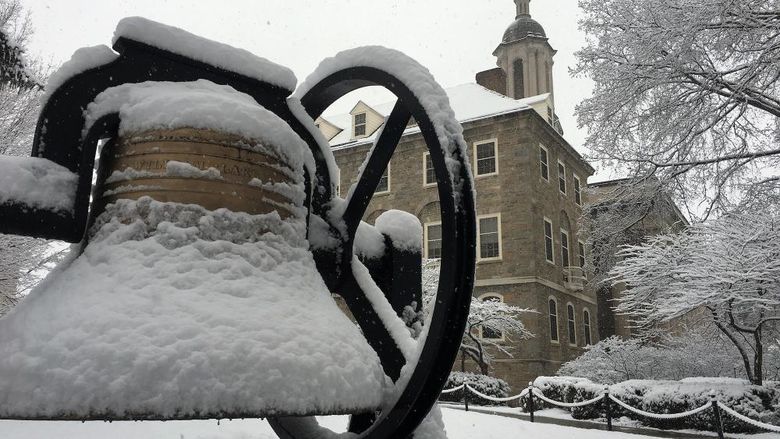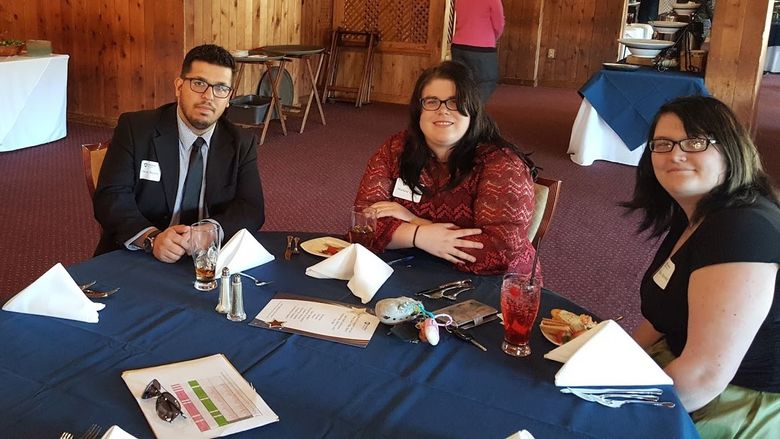Quityn Rodgers, 17, a student at Erie High School, rows a cardboard boat in the Junker Center pool at Penn State Behrend. To build it, he had to first calculate its total surface area.
ERIE, Pa. — The USS Boat Boat is listing, tipping to starboard, and the captain, Quityn Rodgers, is bailing water. He’s trying to remember what the instructor said about Archimedes, the old Greek in the bathtub.
Archimedes was a mathematician. He developed the law of buoyancy, which says that a body immersed in fluid loses weight equal to the weight of the fluid it displaces. He figured that out while taking a bath.
Rodgers, 17, would prefer to learn while dry. He’s wearing swim trunks but still has his socks on.
“I’m just going to hold my breath,” he says.
He’s right to be nervous. The boat, after all, is cardboard, with duct tape over the seams. The one before it swamped within a minute.
The boats are actually a math project, the grand finale of the weeklong Talent Search program, a partnership of Penn State Erie, The Behrend College, and the Northwest Tri-County Intermediate Unit. Twenty-seven high school juniors and seniors participated this year.
Talent Search is a national program that encourages early career exploration. More than 70 percent of the participants – many of whom are low-income or first-generation students – go on to college. That’s five times the average for their peer group.
“These students are driven. They’re going to go places,” says Brittany Bowers, an educator in the Intermediate Unit. “They just need some encouragement.”
Bowers designed the cardboard-boat float to make the math less abstract. She still teaches Archimedes, and buoyancy, and how to calculate an area’s total surface, but she has built in an extra incentive: Rodgers and his classmates don’t want to look foolish, flopping into the pool.
“When they first start working on the project, they struggle,” Bowers says. “They don’t know what they’re going to do. Then they see that it’s a process, and that they just have to take the first step. Once they’re engaged in the process, the dominos start to fall.”
Rodgers and his team began with designs for their boat. Then they built a model, which they tested with pennies. When they calculated how much the boat could hold at full size, they were confident that Rodgers, sitting cross-legged and careful not to wobble, would stay dry.
And there he is, paddling across the shallow end of the pool, smiling for all the camera-phones. He’s tilting but has not yet tipped over.
He has been on the water for 13 minutes and 51 seconds. That’s a record.
“At first, I was sure it was going to tip,” said Rodgers. “All the other ones did. This boat’s good, though. I might be out here until lunch.”
Robb Frederick
Director of Strategic Communications, Penn State Behrend





